Lensrentals cracks open the new Canon RF 600mm f/11 supertelephoto lens to see what’s inside
by William Brawley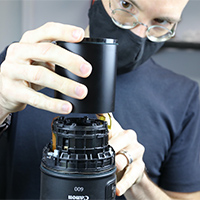
Announced alongside the high-end EOS R5 and R6 full-frame cameras, Canon introduced a pair of rather strange supertelephoto lenses, the RF 600mm f/11 IS STM and RF 800mm f/11 IS STM. Yes, that is correct, f/11. And *just* f/11. Unlike most other lenses, this pair of super-long primes have a fixed-aperture design at f/11.
And unlike Canon's "normal" 600mm and 800mm supertelephoto lenses, the newest versions of which cost an astronomical $13,000 and weigh in at around seven pounds and 10 pounds, respectively, these new RF-mount, fixed-aperture lenses come in at a fraction of the size and weight. The price tags, too, are significantly less, putting these well within the budgetary reach of most photographers.
As you can probably surmise though, some compromises had to be made here to produce lenses with such long focal lengths, yet be extremely compact and affordable. The most obvious trade-off is the fixed f/11 aperture rather than an optical design that allows for an adjustable iris. In this way, these new RF f/11 supertelephoto lenses are, in a sense, a modern reincarnation of the old reflex/mirror lenses. The f/11 design in these new Canon lenses undoubtedly aids in their small size, but it certainly puts you at a disadvantage if you need to shoot in lower light. Furthermore, the f/11 aperture reaches into the "diffraction-related softening" range. In other words, all else equal, you won't likely get as tack-sharp of an image with these f/11 lenses as you would with other 600mm or 800mm lenses with brighter apertures.
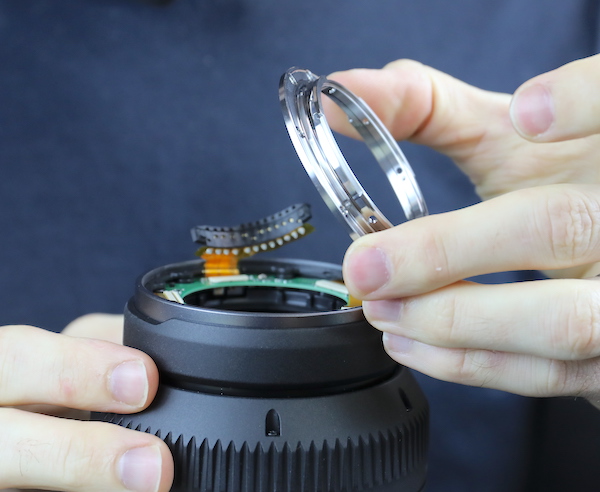
The other primary characteristic of these lenses' small stature is the use of Diffractive Optics. Like the 400mm f/4L DO, these new supertelephoto lenses utilize Canon Diffraction Optics -- Canon's specialized lens technology that incorporates a concentric plastic diffraction lattice across the lens' surface -- and more specifically, Canon's newer "gapless" DO lenses, which sandwiches two DO lenses together without any air gap in between.
All in all, the use of DO elements allow the lenses to be smaller and lighter. The 600mm and 800mm f/11 lenses also have a surprisingly simple optical layout, with very few total lens elements -- the 600mm with just 10, and the 800mm with 11.
But what else is under the proverbial hood of these new super-long lenses? Well, Roger Cicala over at Lensrentals recently purchased an RF 600mm f/11 IS lens, and before he was able to escape for the weekend with it, he was somehow persuaded by colleagues to tear it apart to see just what goes into making such a unique lens.
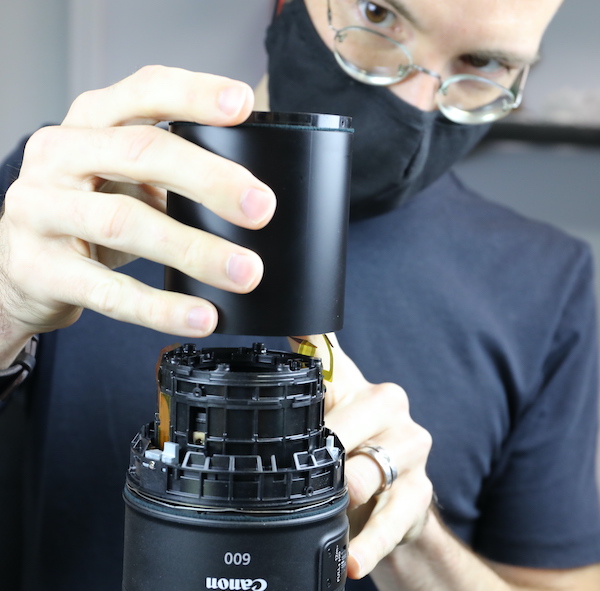
Though Roger & Company have disassembled and reassembled countless Canon lenses over the years, the new RF 600mm f/11 proved to be a fairly complex lens to break into. With its unique telescoping design, the 600mm f/11 isn't put together like your usual Canon lens. Without any sort of disassembly guide, Roger and team were more or less down to "trial and error" in their tear down. Accessing the lens through the tripod mount proved fruitless, and then going through the lens mount found them at another eventual dead end.
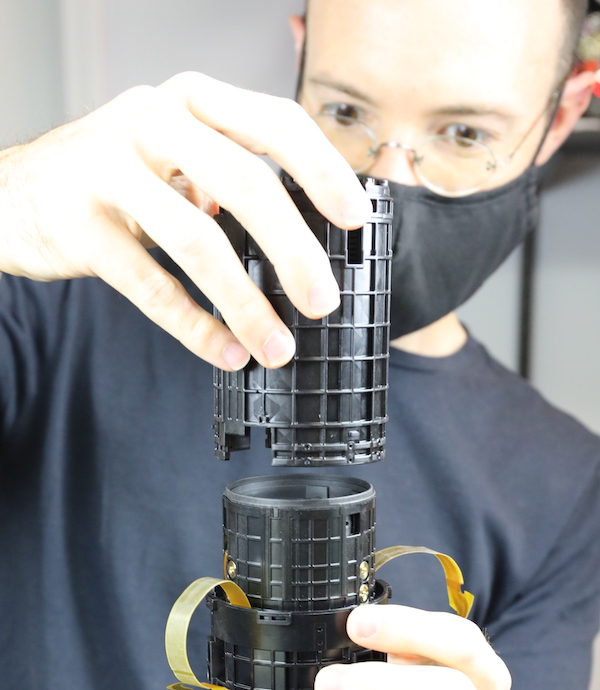
Eventually, they went through the front of the lens and finally began to get a closer look inside. We won't spoil all the fun and the step-by-step photos of the teardown, but the Lensrentals team discovered that the 600mm f/11 lens -- and likely the 800mm version, as well -- is very complex when it comes to its electronic construction, with several long and thin flex-ribbon cables running down the barrel. Electrically, the lenses are designed differently than other Canon lenses. Optically, however, the layout and design feel characteristically Canon, according to Lensrentals.
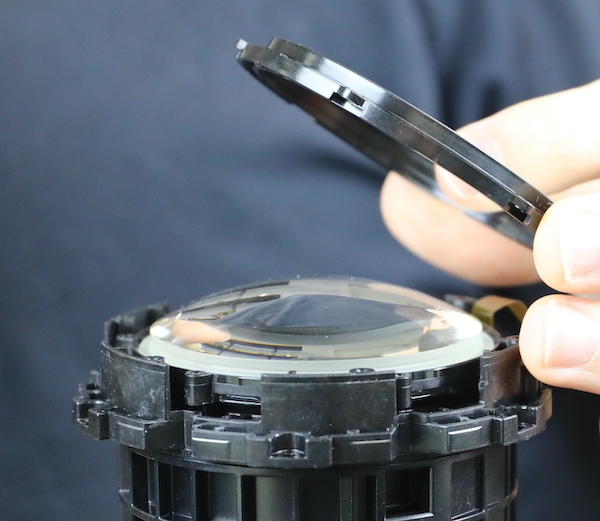
But, with the front DO elements cemented into place onto the inner barrel, further disassembly was more of a challenge than Roger & Co. were willing to undertake.
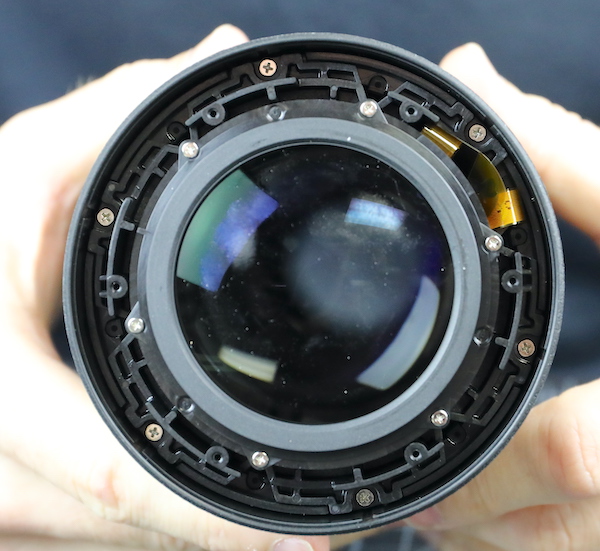
"The front group was cemented in place, we weren't going to uncement it," Roger said. "Further barrel disassembly was going to start with a LOT of flex tracing and unhooking and we just weren't up for that today."
With that, it was time to put the lens back together. But was the team able to reassemble the lens and let Roger head out to shoot for the week? ...Well, you should probably head over to the Lensrentals blog for the full story!
(via Lensrentals. Images courtesy of Lensrentals and used with permission.)
Editor's Note: 08/25/20, 6:45pm - Article previously incorrectly described Canon DO lenses as Fresnel-type lenses. This has been corrected.